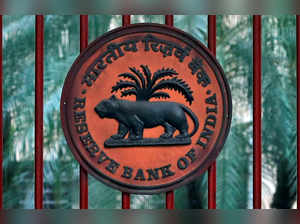 Reuters
ReutersThese include a concrete plan to rein in fiscal deficit instead of kicking the can down the road, targeted tax sops to create employment, and sale of assets to improve liquidity. Behavioural changes would make recovery bumpy, and the texture of recovery would be different from the one that followed the 2008 global financial crisis, the RBI said in its FY20 annual report.
“A credible consolidation plan, specifying actionables for the reduction of debt and deficit levels will earn confidence and acceptability, rather than just extending the path of touch-down,” it said. “It is worthwhile to consider an evaluation of the experience with GST by an independent committee which can draw on the lessons. Fiscal incentives for industry can be realigned in favour of productive labour-intensive companies so as to generate employment.”
Reform or Retreat
The central bank, which has been a part of almost all the easing measures, is warning that the economic structure may have changed for the worse due to the pandemic as the crisis spread beyond the financial system, unlike the global financial crisis (GFC).
“The GFC was essentially a financial meltdown whereas the pandemic is a health crisis, which has deleterious ramifications across real and financial sectors,” the RBI said. “As stimulus is unwound in a calibrated and non-disruptive manner in a post-pandemic scenario, deep-seated and wide-ranging structural reforms in factor and product markets, the financial sector, legal architecture, and in international competitiveness would be needed to regain potential output losses.”
The Indian economy is expected to shrink more than 5% this fiscal and by 25% in the June quarter. Fiscal deficit is expected to soar to nearly 7.5% of the GDP from the desired 3%. So the government needs to augment its resources.
“Targeted public investment funded by monetisation of assets in steel, coal, power, land, railways and privatisation of major ports by central and state governments under an independent regulator can be the way forward to revive and crowd in private investment,” the RBI said. “In fact, GST Council-type of apex authorities can be set up in respect of land, labour and power to drive structural reforms.”

Insolvency laws
While industry and lobby groups have been rooting in favour of a dilution of the bankruptcy regime, the central bank said that for manufacturing to take off, there is a need for infrastructure of global standards and an efficient bankruptcy process.
“Indian manufacturing has been locked in a structural slowdown for quite some time. Reversing this decline warrants a complete rethink. The quality and efficiency of the physical infrastructure, which still significantly lags behind the global median, has to be enhanced to help manufacturing take off. Benchmarking systems and procedures with the best in the world could galvanise growth in the sector, aided by cleaning up of stressed balance sheets of corporates by raising the efficiency of bankruptcy and solvency procedures.”
No free lunches
The RBI reacted quickly to the pandemic by declaring a payment moratorium, cutting rates and boosting liquidity. But it is now stressing that these are temporary measures and that it would not repeat past mistakes when such measures were allowed to continue in the aftermath of the 2008 crisis. The failure to roll back in 2009-11 led to an inflation surge, a currency crisis, and caused financial instability as bad loans reached record highs. “It is important to reiterate that post-containment of Covid-19, a very careful trajectory has to be followed in orderly unwinding of regulatory measures and the financial sector should return to normal functioning without relying on the regulatory relaxations as the new norm,” the RBI said.
After cutting key policy rates by 250 basis points since last year and keeping the market in surplus liquidity, the central bank has also permitted a one-time loan restructuring within a window. A basis point is 0.01 percentage point.
The government also provided backstop to loans to small firms and suspended the bankruptcy law. Nonbanking financial companies and mutual funds were provided a liquidity window to ease financing pressures.
Read More News on
Download The Economic Times News App to get Daily Market Updates & Live Business News.
Subscribe to The Economic Times Prime and read the ET ePaper online.
Read More News on
Download The Economic Times News App to get Daily Market Updates & Live Business News.
Subscribe to The Economic Times Prime and read the ET ePaper online.









 Get Unlimited Access to The Economic Times
Get Unlimited Access to The Economic Times
